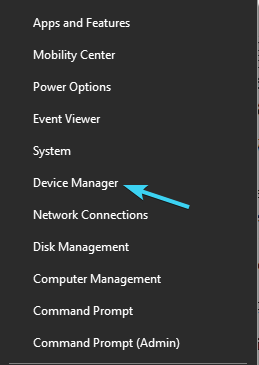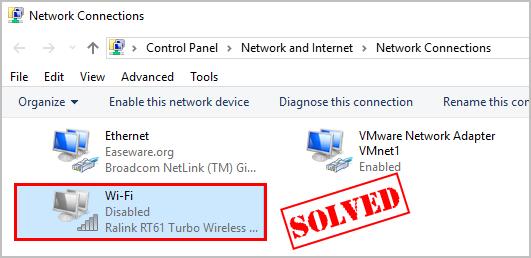- Wireless Lan Network Diagram
- Selected Ssid Wireless Lan Network Not Found
- Wireless Card Driver Windows 10
See the release notes and the readme.txt file for installation instructions, supported hardware, what's new, bug fixes, and known issues. This download installs base drivers, Intel® PROSet for Windows. Device Manager, and Intel® PROSet Adapter Configuration Utility for Intel® Network Adapters with Windows® 10. Network & Wireless Cards. Drivers for Operating System(s). Windows 7 32bit. JUMP TO DOWNLOAD. There are a lot of these devices getting around most will work on Windows 10 without any driver installation, but for older operating system there may be a need to install drivers. It superseded 802.11a, 802.11b, and 802.11g. 4.80.28.7.zip for windows now from softonic, 100% safe and virus free. 802 11n usb wireless lan card driver 100% working download link in description. 802.11 b/g usb wireless adapter best vpn services for 2020 curated by cnet see more on cnet. Network Products Guide 2018 IT World Awards. Ralink 802.11n Wireless LAN Card - Driver Download. Vendor:. Product: Ralink 802.11n Wireless LAN Card. Hardware Class: Net. Windows 7 32-Bit Driver. Total Driver Versions: 7. Recommended Driver. Driver Date:: Release Notes. Deploying a wireless network installation involves selecting the wireless LAN standard that will best meet your networking environment’s needs and specifications, properly addressing the potential for interference and other network speed considerations, and implementing a comprehensive network security policy.
Wireless Lan Network Diagram

Introduction
A wireless local area network (WLAN) is a local areanetwork (LAN) that doesn't rely on wired Ethernetconnections. A WLAN can be either an extension to a current wirednetwork or an alternative to it.
WLANs have data transfer speeds ranging from 1 to 54Mbps, with somemanufacturers offering proprietary 108Mbps solutions. The 802.11nstandard can reach 300 to 600Mbps.
Because the wireless signal is broadcast so everybody nearby canshare it, several security precautions are necessary to ensure onlyauthorized users can access your WLAN.
A WLAN signal can be broadcast to cover an area ranging in sizefrom a small office to a large campus. Most commonly, a WLAN accesspoint provides access within a radius of 65 to 300 feet.
WLAN types
Private home or small business WLAN
Commonly, a home or business WLAN employs one or two access pointsto broadcast a signal around a 100- to 200-foot radius. You can findequipment for installing a home WLAN in many retail stores.
With few exceptions, hardware in this category subscribes to the802.11a, b, or g standards (also known as Wi-Fi); some homeand office WLANs now adhere to the new 802.11n standard. Also, becauseof security concerns, many home and office WLANs adhere to the Wi-FiProtected Access 2 (WPA2) standard.
Enterprise class WLAN

An enterprise class WLAN employs a large number of individualaccess points to broadcast the signal to a wide area. The accesspoints have more features than home or small office WLAN equipment,such as better security, authentication, remote management,and tools to help integrate with existing networks. These accesspoints have a larger coverage area than home or small officeequipment, and are designed to work together to cover a much largerarea. This equipment can adhere to the 802.11a, b, g, or n standard,or to security-refining standards, such as 802.1x and WPA2.
WLAN standards
Several standards for WLAN hardware exist:


| WLAN standard | Pros | Cons |
|---|---|---|
| 802.11a |
|
|
| 802.11b |
|
|
| 802.11g |
|
|
| 802.11n | The 802.11n standard was recently ratified by theInstitute of Electrical and Electronics Engineers (IEEE), as compared to theprevious three standards. Though specifications may change, it isexpected to allow data transfer rates up to 600Mbps, and may offerlarger ranges. | |
Security standards
The 802.11x standards provide some basic security, but are becomingless adequate as use of wireless networking spreads. Following aresecurity standards that extend or replace the basic standard:
WEP (Wired Equivalent Privacy)
WEP encrypts data traffic between the wireless access point and theclient computer, but doesn't actually secure either end of thetransmission. WEP's encryption level is relatively weak (only 40 to128 bits). Many analysts consider WEP security to be weakand easy to crack.
WPA (Wi-Fi Protected Access)
WPA implements higher security and addresses the flaws in WEP, butis intended to be only an intermediate measure until further 802.11isecurity measures are developed.
802.1x
This standard is part of a full WPA security standard. WPA consistsof a pair of smaller standards that address different aspects ofsecurity:
- TKIP (Temporal Key Integrity Protocol encryption), which encryptsthe wireless signal
- 802.1x, which handles the authentication of users to the network
Commonly, wireless systems have you log into individual wirelessaccess points or let you access the wireless network, but then keepyou from accessing network data until you provide furtherauthentication (e.g., VPN).
802.1x makes you authenticate to the wireless network itself, notan individual access point, and not to some other level, such asVPN. This boosts security, because unauthorized traffic can be deniedright at the wireless access point.
WPA2/802.11i
The Wi-Fi Alliances coinedthe term 'WPA2' for easy use by manufacturers, technicians, and endusers. However, the IEEE name of the standard itself is802.11i. The encryption level is so high that it requires dedicatedchips on the hardware to handle it.
In practical use, WPA2 devices have interoperability with WPAdevices. When not interfacing with older WPA hardware, WPA2 deviceswill run strictly by the 802.11i specifications.
WPA2 consists of a pair of smaller standards that address differentaspects of security:
- WPA2-Personal, which uses a pre-shared key (similar to a single password available to groups of users, instead of a single individual); the pre-shared key is stored on the access point and the end user's computer
- WPA2-Enterprise, which authenticates users against a centralizedauthentication service
Selected Ssid Wireless Lan Network Not Found
IU Secure, the new IU wireless network for students,faculty, and staff, uses WPA2 Enterprise for authentication.

Wireless Card Driver Windows 10
The information in this document was adapted from the Wireless LAN Association web page.